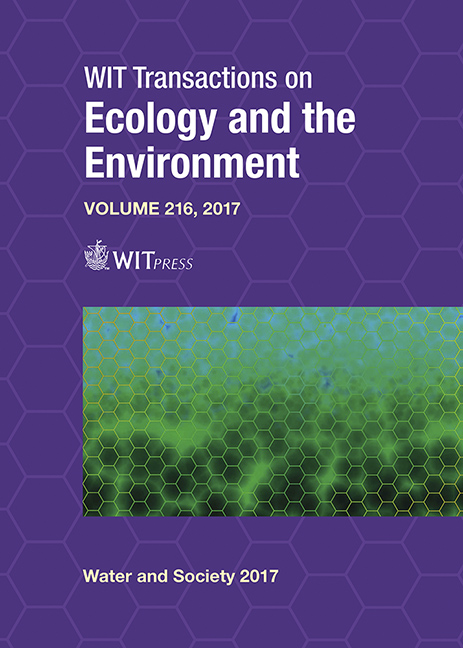QUALITY ASSESSMENT OF A UNIVERSITY CAMPUS WASTEWATER RESOURCE
Price
Free (open access)
Transaction
Volume
216
Pages
9
Page Range
193 - 201
Published
2017
Paper DOI
10.2495/WS170181
Copyright
WIT Press
Author(s)
DAVID O. OMOLE, OLUWASEUN O. ALADE, PRAISEGOD CHIDOZIE EMENIKE, IMOKHAI T. TENEBE, ADEBANJI S. OGBIYE, BEN U. NGENE
Abstract
Vast volumes of freshwater can be conserved if the practice of re-using wastewater is encouraged. In this study, the quality of wastewater from the Covenant University campus was assessed to determine its suitability for landscape irrigation purposes. The university uses a constructed wetland (CW) method in treating both its black-water and grey-water (wastewater). An estimated 874,081 litres/day of wastewater was generated and treated as of 2013, with nearly all of this volume discharged without being re-used. To assess the suitability of the wastewater for reuse, duplicate grab samples of treated effluent from the CW and from the grey water outlet were assessed for physical parameters such as pH, Temperature, Total Dissolved Solid (TDS), Salinity, Conductivity were analysed using handheld Hanna multi-meter instrument (model HI2040). Also, chemical parameters such as Nitrate, Nitrite, Lead, Nickel, Cadmium, Zinc and Copper were tested using Palintest photometer (model 8000). Moreover, total coliform was checked, using standard laboratory methods. Results indicated that none of the tested parameters exceeded the specified limits by Food and Agriculture Organization (FAO) of United Nations and Environmental Protection Agency (EPA) standards for wastewater reuse. Thus, the treated wastewater in Covenant University was found to be a valuable resource for multiple purposes that can add value other than outright discharge. Thus, it was recommended that appropriate infrastructure be put in place to harness and reuse treated wastewater coming from Covenant University.
Keywords
wastewater, quality, reuse, treatment, irrigation, standards, heavy metals, Nigeria, groundwater, effluent





